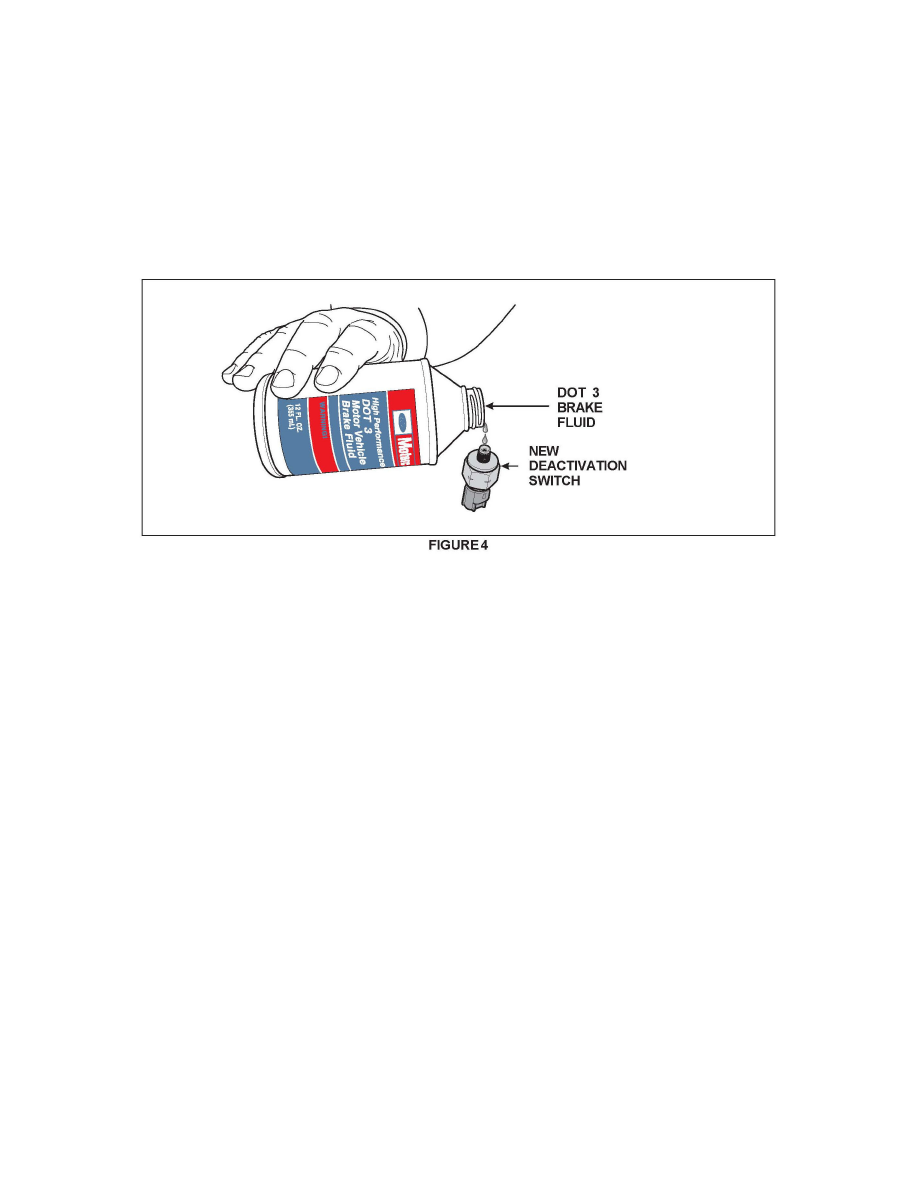Econoline E350 1 Ton V8-5.4L Prop SOHC VIN Z (1998)

Wrap the tie straps underneath then over the top of the existing harness and verify proper fuse holder orientation (See Figure 3).
3. No further action is required release the vehicle.
SPEED CONTROL DEACTIVATION SWITCH (SCDS) REPLACEMENT
NOTE:
The brake pedal must not be depressed during the removal and replacement of the SCDS.
1. Check the brake fluid level at the master cylinder and if necessary fill to maximum fluid level.
NOTICE:
DO NOT apply fluid to the electrical connector or damage to the connector may occur
2. Add a few drops of Motorcraft High Performance DOT 3 Motor Vehicle Brake Fluid PM-1-C (US), CPM-1-C (Canada), to the fluid port at the
threaded end of the new SCDS (See Figure 4).
NOTICE:
Do not allow any foreign material to enter the master cylinder port once the SCDS is removed
3. Remove the old SCDS.
NOTE:
Call the Special Service Support Center for assistance if brake fluid does not flow from the SCDS fitting when the SCDS is removed.
NOTE:
If the new SCDS is not installed immediately after the original switch is removed, the master cylinder brake fluid could drop below the minimum
level and air could enter the brake system. If this should occur, air must be bled from the brake system at all 4 wheels. In this situation, the labor to
bleed the brake system will not be covered under this program
4. With the brake fluid reservoir cap removed, observe for brake fluid dripping/draining from the SCDS fitting. As soon as brake fluid begins to bleed
from the fitting, install the new SCDS and tighten to 18 Nm (13 lb-ft).
5. Check the brake fluid level at the master cylinder fill to maximum fluid level and install the brake fluid reservoir cap.
